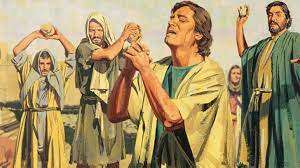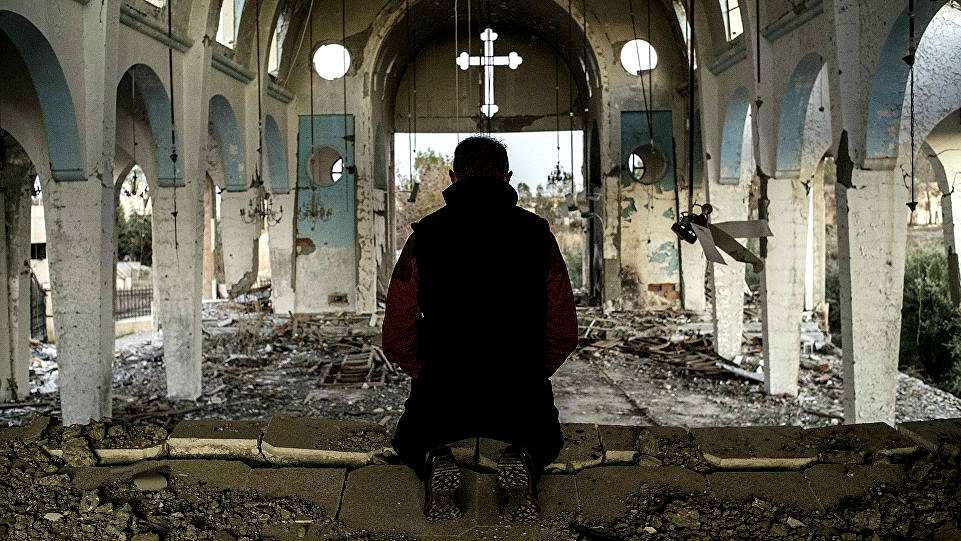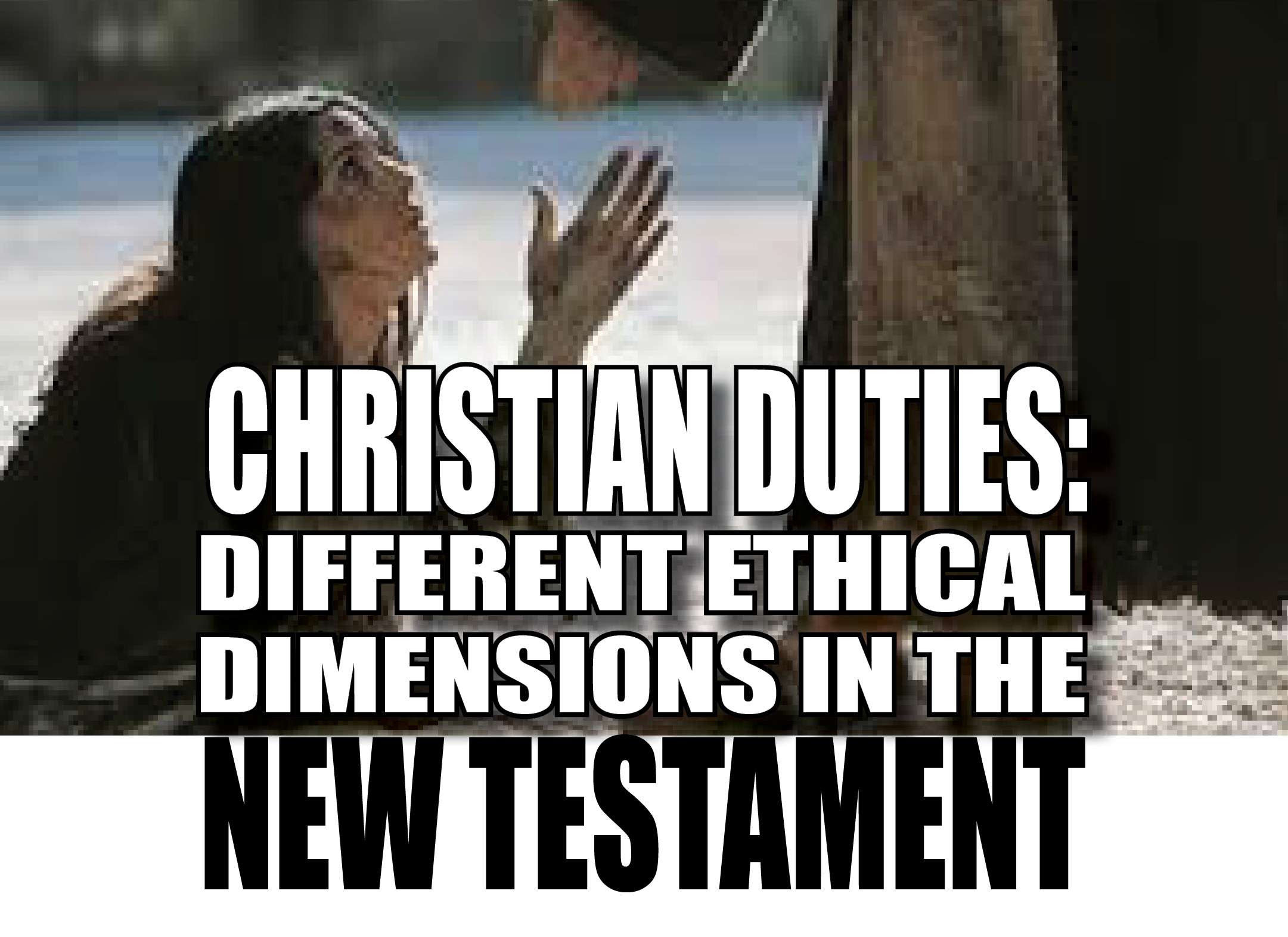

Serenity amid Violence: Stephen’s persecution resembles Christ’s suffering
Pr. Ratheesh A. P.
Violence has been an ongoing issue since Christianity began over two thousand years ago. Religious news reports that Christianity is the most persecuted religious group in the world, with members facing imprisonment, loss of home and property, torture, rape, and even death as a result of their faith. So, violence is an excessive use of force that causes destruction and harm, especially unjust injury. Even in the midst of persecution, Christians taught tolerance to their Nations. John Knox, a student at Westminster, says, "Jesus used the cross to save the people, not sword and force." Those who are using swords and force are not followers of Jesus. Both Stephen's and Jesus’ attitudes towards persecution have influenced people to expound tolerance in the midst of violence.
Suppression of Truth
Stephen’s sermon in Acts chapter 7 addresses the Sanhedrin, which was the highest Jewish council in the 1st century. He walks through the history of Israel and criticises them for their misunderstanding about their own spiritual roots (vs. 1–8); they rejected their God-sent deliverers (vs. 9–36); they disobeyed their laws (vs. 37–43); they despised their Temple (vs. 44–50); and they stubbornly resisted their God and His truth (vs. 51–53). When they heard these hard words from Stephen, they were all outraged. In fact, they were all not offended by him; rather, they were furious at the truth that he spoke against them. So, they were not actually trying to destroy Stephen, but they were prompted to suppress the truth. Even if the truth is suppressed, it just needs a small crack to crop out; it comes out to the surface, pushing down the volume and weight of water. Centuries have passed and been forgotten, but the truth about Christ prevails.
The hostile response of Jewish leaders towards Jesus’ teachings was depicted on different occasions in the Gospels. They were intolerant of hearing the truth about them and their traditions through His teachings. It was hard for them to accept the truth, so they looked for an opportunity to kill him. As a matter of fact, they were disturbed to hear about the truth, not about him. They tried to destroy the truth, but on the other hand, the truth always wins despite any human efforts to cover it up.
Persecution unveils the glory of God
During the storm lashing in the hall of the Sanhedrin, Stephen seems to be on an island of serenity. Luke mentions that Stephen was full of spirit, which caused him to look upward to heaven. In the same manner, Luke employs the same phrase to look intently into heaven as he used to describe the apostles looking towards the sky at the time Jesus ascended (1:10).
At this moment, Stephen sees God’s glory in real life, not in a vision. He glowed like an angel at the onset of his trial (6:15), but at the culmination, he sees God’s glory. Although Scripture denotes that no one is able to see God and live, God’s glory has often been revealed to man. Stephen was literally facing a physical attack on his body; each stone was severely piercing his body, but he was intensively captured by God’s glory. He sees Jesus standing at the right hand of God, which conceivably indicates that Jesus is welcoming Stephen to heaven. The expression "at the right hand of God" refers to the highest honour given to Jesus at the time of his ascension. Amid painful physical experiences, he could see the glory of God. Wherever God’s anointed is persecuted, God’s glory is revealed on the same occasion.
The trial of Stephen bears a resemblance to that of Jesus. When Jesus stood trial before the Sanhedrin, the high priest asked him whether he was the Son of God. He gave an affirmative answer that his audience would see "the Son of man sitting at the right hand of power and coming on the clouds of heaven" (Matt. 26:64; Heb. 1:3, 13). Jesus reveals his role and his position in relationship with his Father. For the Sanhedrin, it was an offensive statement, but Jesus was revealing himself during the time of trial.
Prayer for mercy, not Justice
By way of Stephen facing great opposition, his audience started stoning at him. And the pain was unbearable. In the midst of his pain, he prayed for his opponents. His prayer was not for the forgiveness of his sin but for that of his opponents. It is also possible that Martyrs sometimes prayed for vindication of their persecutors, but to our amazement, Stephen’s prayer was more for mercy than justice. It is also noted that Saul was the one who supported the persecutors by keeping their clothes. But later, Saul became Stephen’s successor in carrying the gospel to Greek-speaking Jews and Gentiles. In his missionary life, Paul suffered ten times as much for Christ as Stephen did (II Cor. 11:23–29). On the death of Stephen with Paul’s consent, Augustine made this penetrating comment: If Stephen had not prayed, the church would not have had Paul. His prayer for mercy on his opponents resulted in Paul's conversion.
Stephen’s prayer virtually reflects the words of our Lord Jesus’ prayer when he was crucified: Lord, do not hold this sin against them" (Luke 23:34). Here, the sequence of Stephen’s prayer is noteworthy. Firstly, he prays that Jesus will accept his spirit, and then he prays that his enemies’ sin of killing an innocent man may be forgiven. The title ‘Lord’ in (Acts 7: 59) refers not to God but to Jesus. In his prayer, Stephen places Jesus on the level of God and thus prays to him directly. One last remark about these prayers is that even if the wordings of Jesus and Stephen’s prayers differ, the sentiments they express are the same. Stephen’s prayer, "Lord Jesus, receive my spirit" (Acts 7:59) is similar to Jesus’ prayer on the cross, Father, into your hands I commend my spirit" (Luke 23:46). And in the same way Stephen’s final words, "Lord, do not count this sin against them."
(Acts 7:60) resonates with Jesus’ prayer, "Father, forgive them, for they know not what they do." (Luke 23:34).
However, Stephen’s attitude towards his opponents when he was persecuted also resembles Jesus’ teachings to His disciples in the gospel of Matthew when they encounter opposition from the Jewish leaders.
Mathew’s portrayal of Jesus’ attitude towards persecution
Gospel of Mathew is much interested in presenting Jesus as the person who treats his enemies beyond the rationale or incompatibility of the existed environment. There are several passages reflect that how Jesus has responded towards the conflicting situations with the Jewish leaders. The concept of nonviolence is explicitly mentioned in Matt 5:43-48. Matthew’s use of “Love for one’s enemy” reflects the Polemical tendency towards his enemies (Matt 5:43-48). Matthew’s use of this term reflects the social situation of the Christian Community. When the Fellow Jewish group accepted Christianity they were excommunicated from the synagogue and were not given privilege to participate in any societal involvements. They were completely neglected, looked down and marginalized from the community.
In such a situation Jesus teaches that how one should respond towards the opposition or persecution. By teaching nonviolence Jesus shows that his community is pure, righteous and perfect where his opponents are stand in opposition. A brief explanation from Matt 5:43-48 will helps us to understand Jesus attitude towards the people who are facing the attack for the sake of their faith.
For Matthew the opponents are the one who hate Jewish Christians (Matt 5:43). In the beginning of this section Matthew has two elements of which the first one is a direct citation from the law and the other is not, although he presents this latter as if it is part of the Old Testament, it is through this misinterpretation of Torah that Matthew portrays the opponents as those who hate the Christians any longer neighbours but as enemies. This strong polemic presentation reflects the situations of his own community and urges them to love their enemies as the part of obeying Jesus’ commandment.
Here Matthew presents the opponents of the Jewish Christians are the one who persecute them (v.44b). This verse expresses that Jewish Christians suffers persecution from Jewish establishments. But it is precisely in a situation of persecution that Jesus’ followers are to show their love by praying for those who are harming them. The religious leaders are labelled or described as persecutors in Matt 23:34.
Thus, it is through this double command (v.44) that Matthew tries to show that the Jewish opponents are the persecutors of the Christians. The Christians are portrayed as the victims of persecution. Matthew defends his own community that practices the command of love of one’s enemies to show their higher value of ethics which is lacking in their opponents. To conclude, Matthew’s focus on the theme of persecution in this verse is also an indication that the Matthean Community is at least in the process of separation.
Matthean Community presents as the Children of the Heavenly Father (v. 45).The Christians who love their enemies are identified as Sons of God. The Matthean Community is distinguished from the opponents as they love their enemies and also by their participation in the activity of the Father who actively does good thing to all. Matthew retains a sharp distinctive language from the source: good and wicked; righteous and unrighteous in the description of God’s character. It is by this polemic language (v.45), Matthew tries to distinguish his own group is righteous who love their enemies than his opponents who persecute Christians.
Matthew seems to portray the picture of Christians who are asked to go beyond reciprocal love to obtain reward (vv 46-47). So Matthew has Jesus promoting a new ethics that surpasses that of the opponents. This elevated status of the community through the commandment of enemy love (and so the higher ethic) is a differentiation of Matthean Community’s distinction from the Jewish neighbours.
Matthew also presents the opponents’ inadequacy of achieving perfection (v.48). Matthew concludes his antithesis with a call to perfection. Matthew’s intension possibly is to show that his own community observes a higher ethics (perfection). The term perfection stands in v.48, is used first as an attribute of human beings (v.48) and then as divine attribute (v.48). In the immediate context it means loving one’s enemy, imitation of God who is impartial to both good and bad people (v.45).
They argue that for Matthew to be “perfect” means fulfil the law through the Manifestation of unrestrained love. In contrast to the Jewish understanding of perfection, which is obeying the Law, Matthew shows that Christian perfection consists of obeying Jesus which is love their enemies. The implication is that the opponents claim to reach perfection but are incapable of achieving it. In doing so, he criticizes the opponents for lacking this qualification. Christians are perfect as they hold to a new ethics of higher righteousness and fulfil the Torah as Jesus interprets it for them. This understanding of the law distinguishes Matthew’s group from its scribal and pharisaic opponents. It is a strong way of presenting Matthew's message to the opponents. So the Jewish Christians are the perfect ones who love their enemies even in the midst of persecution.
In the Gospels, Jesus proclaims entirely a new way of life, i.e., the way of non-violence. Through His words and teachings, Jesus calls the Church to have a reciprocal love towards their enemies. Stephen’s attitude towards his opponents was to grant them God’s mercy so that their sins would be forgiven. Here he gives us a new message: Christians are not to pray for justice when they are persecuted but rather ask for the forgiveness of their opponents’ sins.




